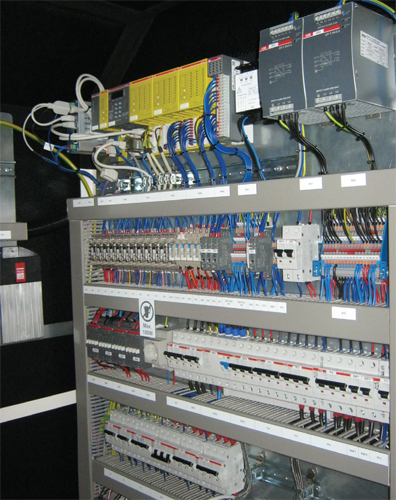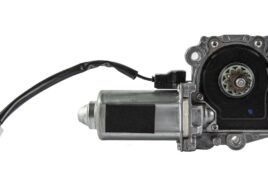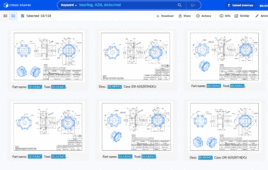 Congestion is a problem at major construction sites as builders exploit the available building space and work to complete projects faster. The workhorse tower crane is critical to the efficiency of such sites, and crane operators often have to work in complex 3D space envelopes with many potential collision zones.
Congestion is a problem at major construction sites as builders exploit the available building space and work to complete projects faster. The workhorse tower crane is critical to the efficiency of such sites, and crane operators often have to work in complex 3D space envelopes with many potential collision zones.
But safety PLCs are helping to increase crane safety. The PLC is part of the crane control system. It continuously monitors load torque, as well as working and collision areas, in real time to SIL3 (IEC 61508 and 62061) PLe (ISO 13849-1) functional safety level. It provides instant and comprehensive visibility for the operator of all key crane status indicators. The crane’s maximum movement speed is also controlled by a fully dynamic calculation of load moment. This enhances crane productivity by providing an infinitely adjustable hoisting performance envelope—rather than using more restrictive gradated maximum speed bands.
The AC500-S safety PLC supports trigonometric mathematical functions, greatly speeding static and dynamic crane load safety calculations. The position of the trolley, radius of the crane, plus load and wind conditions are all displayed on the graphical touch-screen user interface.
“The safety PLC performs complex safety arithmetic functions to monitor key parameters. Among other things, it ensures that maximum permissible load moments are never exceeded to prevent an overload tipping the crane,” said Ralf Tensing, a founder of NTK Ingenieurbüro. “Status is shown in real time. At a glance, the operator can see where the trolley or hoist is and what the load is. When you are working on congested sites or at high altitudes, this is a huge advantage.”
The NTK crane control system consists of a dual-PLC architecture with the math-capable AC500-S safety PLC. Instead of programming using specialized safety PLC function blocks, the AC500-S offers a safety-certified structured text programming language. This high level language, which includes constructs such as IF statements, provides flexibility to develop crane safety monitoring and user interface ideas.
Included with the safety PLC is the safety code analyzer (SCA). This tool verifies that the user is following safety programming rules or guidelines according to IEC 61508-3.
 The AC500-S’s math capabilities include a suite of functions for trigonometric calculations, including COS, SIN, TAN, ASIN, ACOS and LOG. These functions help ensure safe control of movement in any application involving complex kinematics—such as cranes, hoists, manipulators and mobile platforms (automated guided vehicles).
The AC500-S’s math capabilities include a suite of functions for trigonometric calculations, including COS, SIN, TAN, ASIN, ACOS and LOG. These functions help ensure safe control of movement in any application involving complex kinematics—such as cranes, hoists, manipulators and mobile platforms (automated guided vehicles).
The AC500-S safety CPU is programmed using standard editors such as Structured Text (ST), Ladder (LD) or Function Block Diagram (FBD).
This PLC has a separate safety processor. The Safety CPU can be configured to work even if the non-safety processor is in STOP or maintenance mode, or during an online change.
NTK
www.ntk-technik.de
ABB
www.abb.com
Filed Under: INDUSTRIAL SAFETY SYSTEMS, MORE INDUSTRIES, PODCASTS





Tell Us What You Think!